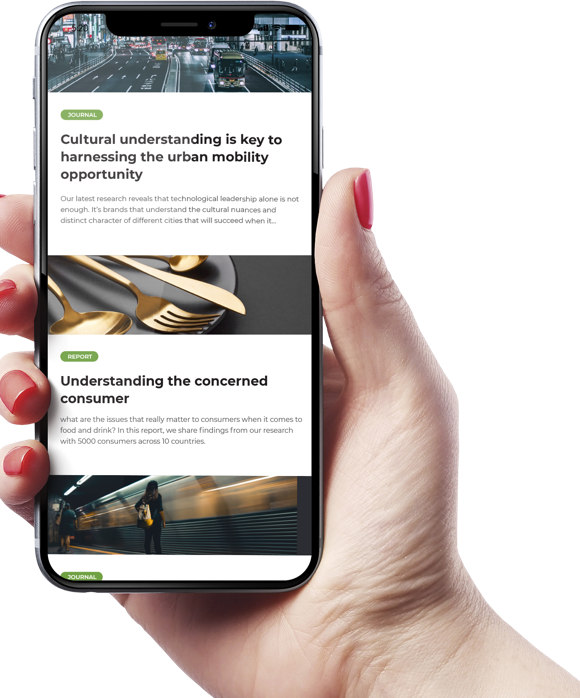In today’s globally connected world, every product has a potentially vast market. Trying to target everyone in this market with the same materials, approaches, and techniques would be crazy — people are too varied and different to respond to the same marketing message.
So how do you ensure your marketing connects effectively with as many people as possible in your target market? The only real solution is to use market segmentation.
In simple terms, market segmentation is the process of taking a diverse and varied market and dividing it into more homogeneous segments.
Typically you’ll split your market into sub-groups based on criteria like their needs, behaviors and attitudes. . Market segmentation is nothing new, but it delivers a wide range of benefits to businesses if you do it the right way.
In this guide, we’ll take a look at why market segmentation is so important, the benefits it delivers, and how you can do it effectively.
Why do we need it?
Targeting everyone in a broad market with the same message is a fast route to poor response rates and low conversion rates.
Imagine you’re selling a new smartphone. The kind of message that will resonate with a 19-year-old customer is likelyto be very different from the message that resonates with a 74-year-old. Whichever you opt for, you’ll end up alienating a segment of your market.
It’s crucial to split your market into different groups so you can use a more tailored marketing message for each one. This works across all channels, from social media ads to email and direct mail.
What are the benefits of market segmentation?
There are many good reasons to segment your market, such as:
- Better conversion rates. The ultimate reason to use segmentation is to improve your conversion rates and increase your revenue. By targeting groups with an offering more relevant to them, you boost your chances of a positive response.
- It helps you lower acquisition costs by focusing on the most profitable customers. By targeting customers who are easier to sell to and bring on board, you’ll be able to focus your efforts more efficiently and avoid spending lots of resources on tricky customers. This is the approach MetLife took with their segmentation efforts, and it’s strategy we’ve used to great effect with a university looking to secure donations from its alumni.
- Create more tailored marketing content. By creating content and ads that are specifically targeted to a certain sub-group of your market, you’ll be able to build a closer relationship with customers. This ensures better retention and stronger connections that, over time, leads to more sales.
- Better response to marketing campaigns. Email is one area where segmentation can work extremely well. Research by Mailchimp found that segmented campaigns had open rates 14.31% higher than those that didn’t use segmentation.
- It saves cost. By increasing the accuracy of your marketing, you’ll get more for your money and ensure less is wasted on poorly targeted marketing campaigns
- Greater personalization. In one report by SmarterHQ, 80% of people who classify themselves as frequent shoppers said they only shop with brands who personalize their experience. By segmenting your market, it’s possible to personalize your messaging and connect more deeply with your target audience.
- Better service. A good segmentation can help you to provide more effective customer service. Some businesses empower their front of house or call center staff with information as to what segment a customer falls into so that they can tailor their interactions accordingly.
- It provides a focus for further market research so that you spend your budget and time on getting to know your most valuable customers
How to do market segmentation
Get regular insights
Keep up to date with the latest insights from our research as well as all our company news in our free monthly newsletter.

Before you start segmenting your market, it’s important to know what to aim for. A good market segment should have the following attributes:
- It’s big enough to be profitable. If your segment is too small, there simply won’t be enough demand for your product or service and you’ll fail to reach your goals.
- The members of your market are similar enough to respond to one message. This is the main reason to segment — is your sub-group homogenous enough for the same marketing strategies to be relevant and effective?
- It’s future-proofed. Will your segment stand the test of time?
- It’s distinct. The segment is memorable and easy to distinguish from other segments.
What categories should you segment your market into?
When it comes to deciding on the criteria for your segments, there are a number of options. Let’s take a look at some of the main types of market segmentation and the benefits and drawbacks of each.
- Demographic segmentation. This involves using criteria like age, gender or income level to segment your customer base.. It’s one of the easiest ways to quickly start dividing up your market, but it is a very simplistic and outdated approach to segmentation. As Mark Ritson rightly argues “millenials are not a segment”. Assuming that everyone of a certain age has the same needs and attitudes and behaves in the same way is misguided and has resulted in some well-known marketing fails. Take Joon, Air France’s sub-brand for millennial travelers. Rooted in stereotypes, the brand alienated its target customers and crashed and burned.
- Geographic segmentation. Similar to demographic segmentation, segmenting your customers based on where they live can leave you in hot water. Assuming that all consumers are the same just because they live in the same place is reductionist and is unlikely to be effective as a segmentation strategy.
- Behavioral segmentation. This type of segmentation is based on how customers have responded or behaved in the past in their interactions with your brand. It’ll help you understand your most profitable customers and what to sell to them but the drawback is in the name. This type of segmentation only tells you how customers have behaved in the past. As such, it’s a poor predictor of future behavior, and it doesn’t provide any insights around motivations, values or needs which can help you connect with consumers on a deeper level.
- Psychographic segmentation. This segments customers based on their views, values and lifestyles. s . It makes it easier to create a more resonant and relatable marketing message and avoid alienating your market with views they won’t agree with.
- Needs-based segmentation. This is by far and away the most effective approach to segmentation. Segmenting people with similar needs allows you to be more targeted in product and service design or marketing campaign development, as you can focus on addressing customer needs and pain points. What’s more needs-based segmentations tend to be more long lasting and future-proofed than other approaches.
Market segmentation is a great way to ensure you’re targeting the right customers and tailoring your interactions for maximum success.
It allows you to forge a deeper bond with your audience. and whilst, it requires more work than a one-size-fits-all message, it’s well worth it in terms of the results.
At Kadence International, we help our clients design effective market segmentation studies and do it in a way that maximizes revenue. To find out how we can do this for you, get in touch.
 Senior Marketing Executive
Senior Marketing Executive Sales & Marketing
Sales & Marketing General Manager PR -Internal Communications & Government Affairs
General Manager PR -Internal Communications & Government Affairs Vital Strategies
Vital Strategies
 Customer Intelligence Director
Customer Intelligence Director